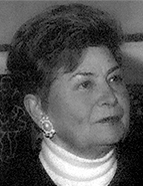

All this work made Irisalva Moita a leading archaeologist in the city and, as such, she was entrusted with directing the excavations of the Roman Theatre (1966), whose interventions were decisive in the monument being classified as a Property of Public Interest. Another area of interest was the restoration of the Roman Galleries on Rua da Prata, previously known as the “Roman Baths.” She prepared a restoration study with a view to opening them to the public, which happened in 1982. It should be added that all the movable items that were uncovered were sent to the City Museum, whose reconfiguration programme she designed and directed, as she was qualified with all the scientific skills required for the position, as mentioned above.
The vicissitudes experienced by this museum were described by Irisalva Moita in the entry “Museu da Cidade” in the Dicionário da História de Lisboa (1994), of which she was co-author (pp. 598-599). The acquisition of the Pimenta Palace by the municipality in 1961 would allow her, as Chief Curator of the municipal museums, to inaugurate it in this new space in 1979, transforming the modest museum that had existed in the Mitra Palace into the Lisbon Museum. To this end, she drew up a programme between 1973 and 1975, with a chronological and evolutionary discourse on the city. It was in this position, which corresponds to the most outstanding phase of her career, that she focused all her interest on the history and defence of the capital’s heritage until 1994, when she retired on reaching the age limit. For Irisalva Moita, the heritage to be safeguarded went beyond the material value of the pieces or the spirit of collecting. It stemmed from her conception of history: these were objects from different eras, bearing the mark of human hands, bearing witness to the long adventure of the people who inhabited and contributed to the definition of the urban area. The same mindset had guided her work as an archaeologist.
This work is financed by national funds through FCT - Foundation for Science and Technology, I.P, in the scope of the projects UIDB/04311/2020 and UIDP/04311/2020.
